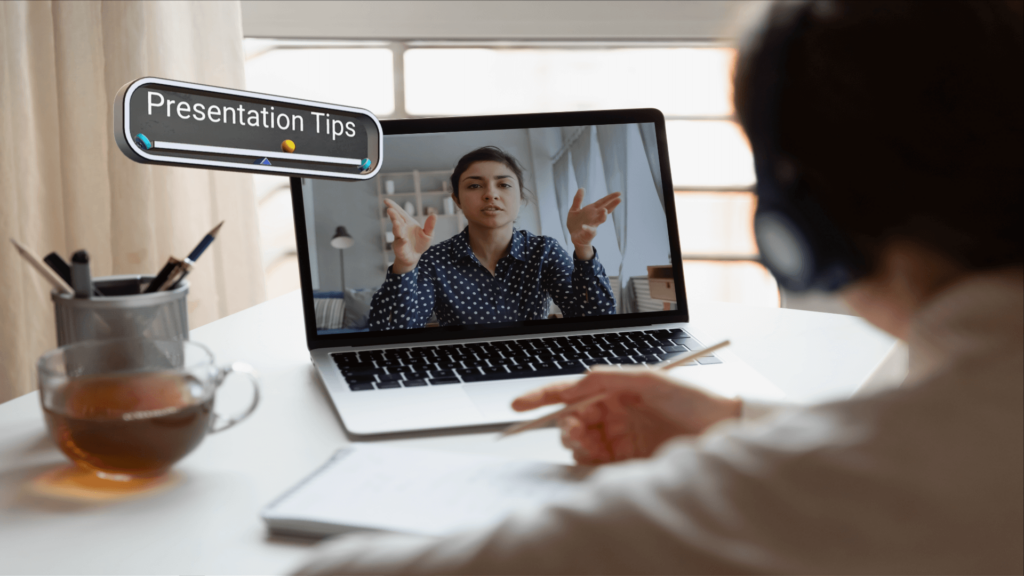Presentations are a fundamental aspect of professional life, whether you’re pitching an idea, delivering a report, or sharing insights with colleagues or clients. To ensure your presentations are impactful and effective, consider the following the Tips For successful presentation:
Audience Analysis
Before crafting your presentation, take the time to understand your audience. Consider their background, knowledge level, and interests. Tailor your content and delivery style to resonate with your audience and address their specific needs and concerns.
Clear Objectives
Define clear objectives for your presentation. What do you aim to achieve? Whether it’s informing, persuading, or inspiring, having a clear goal will help structure your presentation and keep it focused.
Engaging Opening
Capture your audience’s attention from the start with a compelling opening. Use a thought-provoking question, an interesting fact, or a relevant anecdote to draw them in and set the tone for your presentation.
Structured Content
Organize your content in a logical and coherent manner. Use a clear structure with an introduction, main body, and conclusion. Break down complex information into digestible chunks and use visual aids such as slides or diagrams to enhance understanding.
Visual Appeal
Visuals can greatly enhance the impact of your presentation. Use high-quality images, charts, and graphs to illustrate key points and make your content more engaging and memorable. Ensure that visuals are clear, relevant, and visually appealing.
Effective Delivery
Pay attention to your delivery style to keep your audience engaged throughout the presentation. Speak clearly and confidently, maintain eye contact, and vary your tone and pace to keep the audience’s attention. Practice your delivery beforehand to ensure smooth and polished delivery.
Interactivity
Encourage audience participation and engagement by incorporating interactive elements into your presentation. Ask questions, facilitate discussions, or use polling tools to gather feedback and insights from the audience.
Rehearsal
Practice your presentation multiple times before the actual delivery. Rehearse your content, timing, and delivery to ensure smooth transitions and confidence in your delivery. Consider recording yourself or rehearsing in front of a trusted colleague for feedback.
Adaptability
Be prepared to adapt to unexpected changes or challenges during your presentation. Stay flexible and responsive to audience reactions and feedback, and be ready to adjust your content or delivery as needed to ensure a successful outcome.
Closing Impact
End your presentation with a strong closing that reinforces your key message and leaves a lasting impression on your audience. Summarize the main points, reiterate your key message, and provide a clear call to action or next steps for the audience to take.
How to Give a Good Presentation – Tips For Successful Presentation
Giving a good presentation requires careful planning, effective communication, and confident delivery. Here are some additional tips to help you deliver a successful presentation:
Preparation
Thoroughly prepare your content, visuals, and delivery before the presentation. Research your topic, organize your thoughts, and create a detailed outline or script to guide your presentation.
Know Your Audience
Understand your audience’s needs, interests, and expectations. Tailor your content and delivery style to resonate with your audience and address their specific concerns.
Practice
Practice your presentation multiple times to familiarize yourself with the content and timing. Rehearse your delivery, pay attention to your body language and vocal tone, and address any areas that need improvement.
Confidence
Confidence is key to delivering a successful presentation. Project confidence through your body language, tone of voice, and overall demeanor. Believe in yourself and your message, and your audience will be more likely to engage with your presentation.
Engagement
Keep your audience engaged throughout the presentation by incorporating interactive elements, asking questions, and encouraging participation. Use storytelling, humor, or personal anecdotes to captivate your audience and make your content more relatable.
Visual Aids
Use visual aids such as slides, charts, and graphs to enhance your presentation and illustrate key points. Keep visuals clear, concise, and visually appealing, and use them to complement your verbal message rather than overshadowing it.
Timing
Manage your time effectively during the presentation to ensure you cover all key points within the allotted time. Practice pacing your delivery and use visual cues or timing prompts to keep track of time during the presentation.
Adaptability
Be prepared to adapt to unexpected changes or challenges during your presentation. Stay flexible and responsive to audience reactions and feedback, and be ready to adjust your content or delivery as needed to ensure a successful outcome.
Feedback
Seek feedback from trusted colleagues or mentors to help improve your presentation skills. Use constructive feedback to identify areas for improvement and refine your delivery for future presentations.
Continuous Improvement
Continue to refine and improve your presentation skills over time. Reflect on past presentations, learn from both successes and failures, and incorporate feedback and new techniques into your future presentations.
Presentation Tips for Professionals
As a professional, effective presentation skills are essential for communicating ideas, influencing decisions, and advancing your career. Here are some additional tips tailored specifically for professionals:
Align with Organizational Goals
Ensure that your presentation aligns with the goals and objectives of your organization. Focus on delivering value and addressing key priorities that are relevant to your audience and stakeholders.
Demonstrate Expertise
Establish yourself as an authority on your topic by showcasing your expertise and knowledge. Provide credible sources, data, and examples to support your arguments and build credibility with your audience.
Tailor to Your Audience
Customize your presentation to resonate with your audience’s interests, preferences, and level of expertise. Consider their background, industry knowledge, and specific needs when crafting your content and delivery.
Highlight Relevance
Emphasize the relevance and importance of your presentation to your audience’s goals and objectives. Clearly articulate how your message aligns with their interests and how they stand to benefit from your insights or recommendations.
Professionalism and Etiquette
Maintain a professional demeanor throughout your presentation, including your appearance, behavior, and communication style. Demonstrate respect, courtesy, and professionalism in your interactions with the audience and adhere to established etiquette norms.
Address Questions and Concerns
Be prepared to address questions, concerns, and objections from your audience during the presentation. Anticipate potential challenges or points of contention and prepare thoughtful responses to effectively address them.
Follow-Up
Follow up with your audience after the presentation to reinforce key messages, address any lingering questions or concerns, and provide additional resources or support as needed. Maintain open lines of communication and continue to engage with your audience to build rapport and trust over time.
By implementing these presentation tips and strategies, professionals can enhance their communication skills, build credibility and influence, and achieve greater success in their professional endeavors.
Unveiling the Future: ARTI AR Presentation
In the realm of cutting-edge technology, augmented reality (AR) stands as a beacon of innovation, promising to revolutionize the way we interact with the world around us. The ARTI AR presentation is a captivating journey into this dynamic and transformative field, showcasing the boundless possibilities of AR technology and its potential impact across various industries.
Exploring Augmented Reality
The presentation begins by immersing the audience in the world of augmented reality, providing a comprehensive overview of its fundamental concepts and principles. Through engaging visuals and clear explanations, attendees gain a deeper understanding of how AR overlays digital information onto the physical environment, creating immersive and interactive experiences.
Applications Across Industries
One of the highlights of the ARTI AR presentation is its exploration of the diverse applications of AR across industries. From retail and marketing to education, healthcare, and beyond, AR has the potential to revolutionize processes, enhance customer experiences, and drive innovation. By showcasing real-world examples and case studies, the presentation demonstrates how businesses and organizations are leveraging AR to achieve tangible results and stay ahead in today’s competitive landscape.
Interactive Demonstrations
A key feature of the ARTI AR presentation is its emphasis on interactive demonstrations and hands-on experiences. Through live demos and interactive simulations, attendees have the opportunity to witness firsthand the power and potential of AR technology. Whether it’s exploring virtual environments, interacting with digital objects, or experiencing AR-enhanced training modules, these demonstrations leave a lasting impression and spark curiosity about the possibilities of AR.
Technical Insights and Development
Delving deeper into the technical aspects of AR development, the presentation provides valuable insights into the tools, platforms, and technologies driving the evolution of AR. From software development kits (SDKs) and augmented reality authoring tools to hardware considerations and design principles, attendees gain a comprehensive understanding of the AR development process and the key factors to consider when creating AR experiences.



